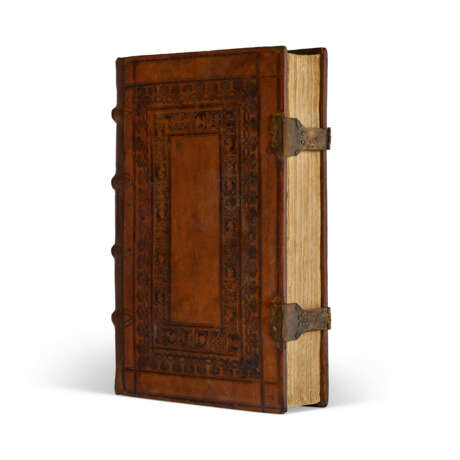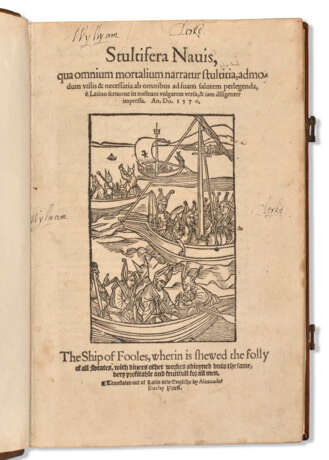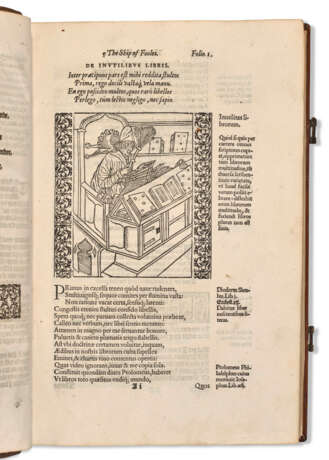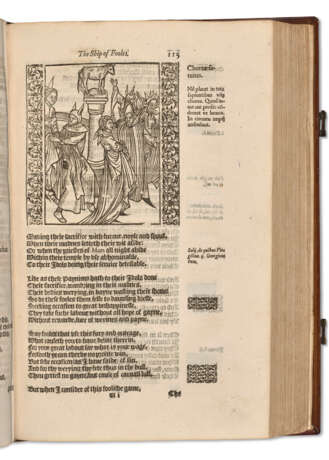ID 813796
Lot 16 | The Ship of Fools
Estimate value
$ 15 000 – 25 000
Sebastian Brant, 1570
BRANT, Sebastian (1458-1521). Stultifera navis, qua omnium mortalium narratur stultitia. Translated by Alexander Barclay. London: John Cawood, 1570.
The very fine Doheny copy in contemporary English calf. Second English edition of this influential satire blending medieval imagery with humanist ideals. Riffing on the allegory of the "ship of fools," Brant ruthlessly enumerates the categories of human vice and even invents a patron saint of disgusting people. The memorable series of woodblocks depicting the fools' paradise of Narragonia was first used in Richard Pynson's vanishingly rare first English edition of 1509. All but seven blocks were copied from Pierre Rivière's 1497 French edition, which in turn were derived from the cuts by Albrecht Dürer and others from the 1494 Basel first edition. Its enduring popularity, even after didactic poems had largely fallen out of fashion, resulted in many editions and translations. This is a fresh and lovely copy of a very important Renaissance book. Pforzheimer 41; STC (2nd ed.), 3546.
Folio (288 x 190mm). Large woodcut on title and woodcut illustrations throughout the text (a few small tears and neat repairs in margins, a little toning at end with ink stain in lower margin). Contemporary English blind-tooled calf (expertly rebacked and restored by James Brockman, preserving original spine panels and pastedowns, flyleaves and clasps renewed). Custom velvet-lined box. Provenance: "Wyllyam Clerke" (early signatures on title, possibly the William Clerke who wrote The triall of bastardie, STC 5411) – Estelle Doheny (morocco book label; her sale, part IV, 17 October 1988, lot 1118).
| Address of auction |
CHRISTIE'S 20 Rockefeller Plaza 10020 New York USA | ||||||||||||||
|---|---|---|---|---|---|---|---|---|---|---|---|---|---|---|---|
| Preview |
| ||||||||||||||
| Phone | +1 212 636 2000 | ||||||||||||||
| Fax | +1 212 636 4930 | ||||||||||||||
| Conditions of purchase | Conditions of purchase | ||||||||||||||
| Shipping |
Postal service Courier service pickup by yourself | ||||||||||||||
| Payment methods |
Wire Transfer | ||||||||||||||
| Business hours | Business hours
|






